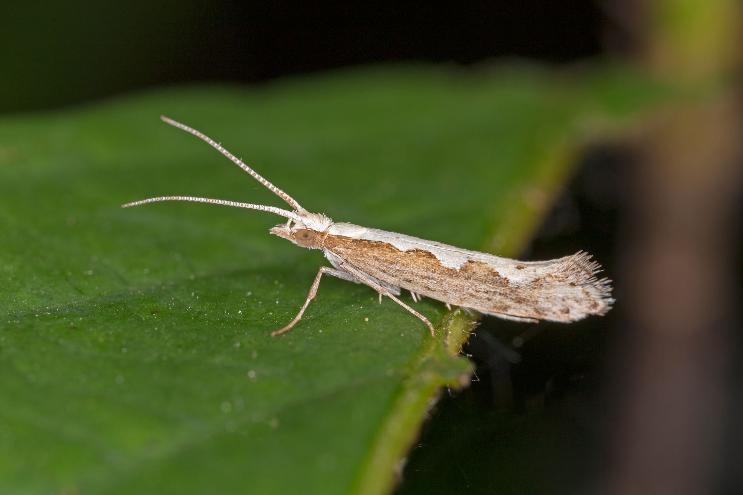La piéride du chou, les pucerons ou bien encore les noctuelles : tant de petits insectes qui peuvent attaquer vos cultures de choux, réduisant à néant vos efforts. Voici nos conseils pour vaincre ces fléaux miniatures et protéger vos cultures, tout en respectant la biodiversité.
Quels sont les insectes ravageurs des choux ?
- La cécidomyie du chou (Plutella xylostella) : Les cécidomyies s’apparentent à des petits papillons de nuit qui pondent leurs œufs sur les tiges et bourgeons des choux. En se nourrissant, les larves vont principalement causer des déformations aux choux, impactant fortement la production.
- La piéride du chou (Pieris rapae) : Les piérides sont des papillons blancs qui pondent leurs œufs sur les feuilles de choux. Les chenilles qui en éclosent se nourrissent des feuilles, causant des dégâts importants.
- Les altises (Phyllotreta spp.) : Les altises sont de petits coléoptères noirs qui se nourrissent des feuilles des choux. Leurs larves peuvent également endommager les racines des plantes.
- La mouche du chou (Delia radicum) : Les mouches du chou pondent leurs œufs à la base des plantes de choux. Les larves qui en éclosent pénètrent dans les racines et peuvent provoquer le flétrissement et la pourriture des plantes.
- Les pucerons (Aphididae) : Les pucerons sont de petits insectes qui se nourrissent de la sève des plantes. Ils peuvent provoquer un affaiblissement général des choux et transmettre des maladies.
- Les noctuelles (Agrotis spp.) : Les noctuelles sont des papillons de nuit dont les chenilles se nourrissent des feuilles de choux. Elles peuvent causer des défoliations importantes.
Comment lutter contre ces ravageurs ?
Rotation des cultures
Dans la conception de votre jardin, prévoyez une rotation des cultures pour éviter que les ravageurs spécifiques aux choux ne s'accumulent dans le sol. Alternez les cultures de choux avec d'autres familles de légumes pour réduire la pression des insectes ravageurs. Une diversification des plantes attire également des prédateurs naturels d'insectes nuisibles.
Associations bénéfiques
Et si nous créions une véritable fête du potager ? Invitez les plantes compagnes à rejoindre vos choux ! Certaines plantes associées peuvent aider à limiter les ravageurs des choux grâce à des interactions bénéfiques. Voici quelques exemples de plantes compagnes qui peuvent être bénéfiques pour les choux :
- Ail et oignon : La plantation d'ail et d'oignon à proximité des choux peut repousser certains ravageurs, tels que les pucerons et les chenilles.
- Souci (calendula) : Le souci est connu pour repousser les pucerons et autres insectes nuisibles. Il peut être planté autour des choux pour les protéger des infestations.
- Ciboulette : La ciboulette a des propriétés répulsives contre les pucerons, les altises et les mouches du chou. Planter de la ciboulette entre les rangées de choux peut aider à protéger les plantes des ravageurs.
- Menthe : La menthe a un fort parfum qui peut éloigner certains insectes nuisibles des choux. Cependant, il est recommandé de la planter dans des pots ou des bacs car elle a tendance à se propager rapidement.
- Radis : Les radis peuvent être utilisés comme un "leurre" pour attirer les altises et les mouches du chou loin des choux. Les insectes infesteront les radis plutôt que les choux, ce qui peut aider à protéger ces derniers.
- Bourrache : La bourrache attire les insectes pollinisateurs bénéfiques, tels que les abeilles, qui peuvent aider à la pollinisation des choux. Elle peut également agir comme une plante répulsive contre certains ravageurs.
Favoriser la biodiversité
La biodiversité est le secret d'un écosystème équilibré. Pour chasser les ravageurs, accueillez leurs prédateurs naturels dans votre jardin. Attirez les coccinelles, les syrphes et les chrysopes en leur offrant un habitat confortable et des fleurs délicieusement odorantes. Semez des mélanges de fleurs afin d’obtenir une vraie colocation conviviale où tout le monde trouve son compte !
Utilisation de barrières physiques
Protégez vos choux des piérides et autres insectes volants en leur offrant un filet anti-insectes. Installez-le directement après la plantation de vos plantons et laissez-le quelques semaines selon la croissance des plantes.
Ce filet permet notamment de protéger vos choux contre les cécidomyies, qui pondent leurs œufs dans les tiges et bourgeons et déforment ensuite les choux.
Compostage et soin du sol
Donnons un coup de pouce à nos choux en leur offrant un sol de première qualité. En nourrissant votre sol avec un bon compost, vous renforcez les défenses naturelles de vos plantes et aidez-les à se défendre contre les insectes ravageurs.
Les choux étant très gourmands en azote, nous vous conseillons de leur apporter suffisamment de fertilisant afin de les rendre plus robustes.
Kohlweisslinge, Blattläuse und Eulen - all diese kleinen Insekten können Ihre Kohlpflanzen angreifen und Ihre Bemühungen zunichte machen. Hier sind unsere Tipps, wie Sie diese Miniatur Plagen besiegen und Ihre Kulturen schützen können, während Sie gleichzeitig die Biodiversität respektieren.
Welche Insekten schädigen den Kohl?
- Kohlgallmücke (Plutella xylostella): Kohlgallmücken gleichen kleinen Motten, die ihre Eier an den Stängeln und Knospen der Kohlpflanzen ablegen. Die Larven fressen sich durch den Kohl und verursachen hauptsächlich Verformungen die sich stark auf die Produktion auswirkt.
- Der Kohlweissling (Pieris rapae) : Kohlweisslinge sind weisse Schmetterlinge, die ihre Eier auf den Blättern der Kohlpflanzen ablegen. Die daraus schlüpfenden Raupen ernähren sich von den Blättern und verursachen erhebliche Schäden.
- Erdflöhe (Phyllotreta spp.) : Erdflöhe sind kleine schwarze Käfer, die sich von den Blättern der Kohlpflanzen ernähren. Ihre Larven können auch die Wurzeln der Pflanzen schädigen.
- Kohlfliege (Delia radicum): Kohlfliegen legen ihre Eier an der Basis der Kohlpflanzen ab. Die daraus schlüpfenden Larven dringen in die Wurzeln ein und können die Pflanzen zum Welken und zur Fäulnis bringen.
- Blattläuse (Aphididae) : Blattläuse sind kleine Insekten, die sich vom Pflanzensaft ernähren. Sie können eine allgemeine Schwächung des Kohls verursachen und Krankheiten übertragen.
- Eulenraupen (Agrotis spp.): Eulenraupen sind Nachtfalter, deren Raupen sich von den Kohlblättern ernähren. Sie können erhebliche Kahlfrassschäden verursachen.
Wie kann man diese Schädlinge bekämpfen?
Rotation der Kulturen
Planen Sie bei der Gestaltung Ihres Gartens einen Kulturenwechsel ein, um zu verhindern, dass sich die kohlspezifischen Schädlinge im Boden ansammeln. Wechseln Sie den Kohlanbau mit anderen Gemüsefamilien ab, um den Druck durch Insektenschädlinge zu verringern. Eine Diversifizierung der Pflanzen zieht auch natürliche Räuber von Schadinsekten an.
Vorteilhafte Kombinationen
Wie wäre es, wenn wir ein echtes Gemüsegartenfest ins Leben rufen? Laden Sie die Begleitpflanzen zu Ihrem Kohl ein! Einige Begleitpflanzen können durch vorteilhafte Wechselwirkungen dazu beitragen, Kohlschädlinge einzudämmen. Hier sind einige Beispiele für Begleitpflanzen, die für den Kohl vorteilhaft sein können:
- Knoblauch und Zwiebel: Das Anpflanzen von Knoblauch und Zwiebeln in der Nähe von Kohlpflanzen kann einige Schädlinge wie Blattläuse und Raupen abwehren.
- Ringelblume (Calendula): Die Ringelblume ist dafür bekannt, Blattläuse und andere Schädlinge abzuwehren. Sie kann um Kohlköpfe herum gepflanzt werden, um sie vor Befall zu schützen.
- Schnittlauch: Schnittlauch hat abstossende Eigenschaften gegen Blattläuse, Erdflöhe und Kohlfliegen. Das Pflanzen von Schnittlauch zwischen den Kohlreihen kann helfen, die Pflanzen vor Schädlingen zu schützen.
- Minze: Minze hat einen starken Duft, der einige Kohlschädlinge fernhalten kann. Sie sollte jedoch in Töpfen oder Kübeln gepflanzt werden, da sie dazu neigt, sich schnell auszubreiten.
- Radieschen: Radieschen können als "Lockvogel" eingesetzt werden, um Erdflöhe und Kohlfliegen vom Kohl wegzulocken. Die Insekten werden eher die Radieschen als den Kohl befallen, was dazu beitragen kann, den Kohl zu schützen.
- Borretsch: Borretsch zieht nützliche bestäubende Insekten wie Bienen an, die bei der Bestäubung von Kohl helfen können. Er kann auch als Repellent-Pflanze gegen bestimmte Schädlinge wirken.
Fördern Sie die biologische Vielfalt.
Biodiversität ist das Geheimnis eines ausgewogenen Ökosystems. Um Schädlinge zu vertreiben, heissen Sie deren natürliche Fressfeinde in Ihrem Garten willkommen. Ziehen Sie Marienkäfer, Schwebfliegen und Florfliegen an, indem Sie ihnen einen komfortablen Lebensraum und herrlich duftende Blumen bieten. Säen Sie Blumenmischungen aus, um eine echte, gesellige Wohngemeinschaft zu schaffen, in der alle auf ihre Kosten kommen!
Einsatz von physischen Barrieren
Schützen Sie Ihren Kohl vor Kohlweisslingen und anderen fliegenden Insekten mit einem Insektenschutznetz. Bringen Sie es direkt nach dem Einpflanzen Ihrer Setzlinge an und lassen Sie es je nach Wachstum der Pflanzen einige Wochen hängen.
Das Netz schützt Ihren Kohl vor allem vor Blindschleichen, die ihre Eier in die Stängel und Knospen legen und den Kohl dann deformieren.
Kompostierung und Bodenpflege
Geben wir unseren Kohlköpfen einen Schub, indem wir ihnen einen erstklassigen Boden bieten. Wenn Sie Ihren Boden mit gutem Kompost versorgen, stärken Sie die natürlichen Abwehrkräfte Ihrer Pflanzen und helfen ihnen, sich gegen Schädlinge zu wehren.
Da Kohlpflanzen sehr stickstoffbedürftig sind, sollten Sie sie mit ausreichend Dünger versorgen, um sie kräftiger zu machen.
Cabbage worms, aphids and noctuid moths are just some of the tiny insects that can attack your cabbage crops, wiping out all your efforts. Here's our advice on how to defeat these miniature pests and protect your crops, while respecting biodiversity.
What are the insect pests of cabbage?
- Cabbage midge (Plutella xylostella): Midges are small moths that lay their eggs on cabbage stems and buds. As they feed, the larvae will mainly cause deformations to the cabbages, having a major impact on production.
- Cabbage whitefly (Pieris rapae): White butterflies lay their eggs on cabbage leaves. The caterpillars that hatch feed on the leaves, causing considerable damage.
- Flea beetles (Phyllotreta spp.): Flea beetles are small black beetles that feed on cabbage leaves. Their larvae can also damage plant roots.
- Cabbage maggot (Delia radicum): Cabbage maggots lay their eggs at the base of cabbage plants. The larvae that hatch penetrate the roots and can cause plants to wilt and rot.
- Aphids (Aphididae): Aphids are small insects that feed on plant sap. They can weaken cabbages and transmit diseases.
- Noctuid moths (Agrotis spp.): Noctuid moths are moths whose caterpillars feed on cabbage leaves. They can cause severe defoliation.
How to control these pests?
Crop rotation
When designing your garden, consider crop rotation to prevent cabbage-specific pests from accumulating in the soil. Alternate cabbage crops with other vegetable families to reduce insect pest pressure. Plant diversification also attracts natural predators of insect pests.
Beneficial associations
How about a real vegetable garden party? Invite companion plants to join your cabbages! Some companion plants can help limit cabbage pests through beneficial interactions. Here are a few examples of companion plants that can benefit cabbages:
- Garlic and onion: Planting garlic and onion near cabbages can repel certain pests, such as aphids and caterpillars.
- Calendula: Calendula is known to repel aphids and other insect pests. It can be planted around cabbages to protect them from infestation.
- Chives: Chives have repellent properties against aphids, flea beetles and cabbage flies. Planting chives between rows of cabbage can help protect plants from pests.
- Mint: Mint has a strong fragrance that can repel certain cabbage pests. However, it is advisable to plant it in pots or tubs, as it tends to spread quickly.
- Radishes: Radishes can be used as a "decoy" to attract flea beetles and cabbage flies away from cabbages. Insects will infest radishes rather than cabbages, which can help protect the latter.
- Borage: Borage attracts beneficial pollinating insects, such as bees, which can help pollinate cabbages. It can also act as a repellent against certain pests.
Promoting biodiversity
Biodiversity is the secret of a balanced ecosystem. To keep pests at bay, welcome their natural predators into your garden. Attract ladybugs, hoverflies and lacewings by offering them a comfortable habitat and deliciously fragrant flowers. Sow a flower mix to create a friendly roommate for all!
Using physical barriers
Protect your cabbages from powdery mildews and other flying insects with insect netting. Install it directly after planting and leave it in place for a few weeks, depending on plant growth.
In particular, this net will protect your cabbages against midges, which lay their eggs in the stems and buds and then deform the cabbages.
Composting and soil care
Let's give our cabbages a boost with top-quality soil. By nourishing your soil with good compost, you strengthen your plants' natural defenses and help them defend themselves against insect pests.
As cabbages are very demanding in terms of nitrogen, we advise you to provide them with sufficient fertilizer to make them more robust.
Cavolaie, afidi e falene nottuide sono solo alcuni dei piccoli insetti che possono attaccare le vostre colture di cavoli, vanificando tutti i vostri sforzi. Ecco i nostri consigli su come sconfiggere questi parassiti in miniatura e proteggere le vostre colture, nel rispetto della biodiversità.
 Il moscerino del cavolo
Il moscerino del cavolo
Quali sono gli insetti parassiti del cavolo?
- Il moscerino del cavolo (Plutella xylostella): i moscerini sono piccole falene che depongono le uova sugli steli e sui germogli del cavolo. Quando si nutrono, le larve causano principalmente deformazioni ai cavoli, con un forte impatto sulla produzione.
- La mosca bianca del cavolo (Pieris rapae): Le farfalle bianche depongono le uova sulle foglie di cavolo. I bruchi che si schiudono si nutrono delle foglie, causando gravi danni.
- Scarabeo delle pulci (Phyllotreta spp.): I coleotteri delle pulci sono piccoli coleotteri neri che si nutrono delle foglie di cavolo. Le loro larve possono danneggiare anche le radici delle piante.
- Verme del cavolo (Delia radicum): Le mosche del cavolo depongono le uova alla base delle piante di cavolo. Le larve che si schiudono penetrano nelle radici e possono far appassire e marcire le piante.
- Afidi (Aphididae): Gli afidi sono piccoli insetti che si nutrono della linfa delle piante. Possono causare un indebolimento generale dei cavoli e trasmettere malattie.
- Falene nottuide (Agrotis spp.): Le falene noctuide sono falene i cui bruchi si nutrono delle foglie di cavolo. Possono causare gravi defogliazioni.
Come possiamo combattere questi parassiti?
Rotazione delle colture
Quando progettate l'orto, ruotate le colture per evitare che i parassiti specifici del cavolo si accumulino nel terreno. Alternate le colture di cavolo con altre famiglie di ortaggi per ridurre la pressione degli insetti nocivi. La diversità delle piante attira anche i predatori naturali degli insetti dannosi.
Combinazioni benefiche
Che ne dite di creare una vera e propria festa nell'orto? Invitate le piante compagne a unirsi ai vostri cavoli! Alcune piante compagne possono contribuire a limitare i parassiti del cavolo grazie a interazioni benefiche. Ecco alcuni esempi di piante compagne che possono giovare ai cavoli:
- Aglio e cipolla: piantare aglio e cipolla vicino ai cavoli può respingere alcuni parassiti, come afidi e bruchi.
- Calendula: la calendula è nota per respingere gli afidi e altri insetti nocivi. Può essere piantata intorno ai cavoli per proteggerli dalle infestazioni.
- Erba cipollina: l'erba cipollina ha proprietà repellenti contro afidi, pulci e mosche del cavolo. Piantare l'erba cipollina tra le file di cavoli può aiutare a proteggere le piante dai parassiti.
- Menta: la menta ha un forte profumo che può respingere alcuni parassiti del cavolo. Tuttavia, è consigliabile piantarla in vasi o vasche, poiché tende a diffondersi rapidamente.
- Ravanelli: i ravanelli possono essere usati come "esca" per attirare le pulci e le mosche del cavolo lontano dai cavoli. Gli insetti infesteranno il ravanello piuttosto che il cavolo, il che può aiutare a proteggere il cavolo.
- Borragine: la borragine attira gli insetti impollinatori, come le api, che possono contribuire all'impollinazione dei cavoli. Può anche agire come repellente contro alcuni parassiti.
Incoraggiare la biodiversità
La biodiversità è il segreto di un ecosistema equilibrato. Per allontanare i parassiti, accogliete nell'orto i loro predatori naturali. Attirate coccinelle, sirfidi e lucciole offrendo loro un habitat confortevole e fiori dal profumo delizioso. Seminate un misto di fiori per creare un coinquilino amichevole dove ce n'è per tutti i gusti!
Utilizzo di barriere fisiche
Proteggete i cavoli dall'oidio e da altri insetti volanti con una rete anti-insetti. Installatela subito dopo la messa a dimora delle piantine e lasciatela in posizione per alcune settimane, mentre le piante crescono.
In particolare, questa rete proteggerà i cavoli dai moscerini, che depongono le uova negli steli e nei germogli e poi deformano i cavoli.
Compostaggio e cura del terreno
Date una spinta ai vostri cavoli fornendo loro un terreno di ottima qualità. Nutrendo il terreno con un buon compost, rafforzerete le difese naturali delle piante e le aiuterete a difendersi dagli insetti.
Poiché i cavoli sono molto esigenti in termini di azoto, vi consigliamo di fornire loro una quantità sufficiente di fertilizzante per renderli più robusti.







Protégez vos choux des invités indésirables